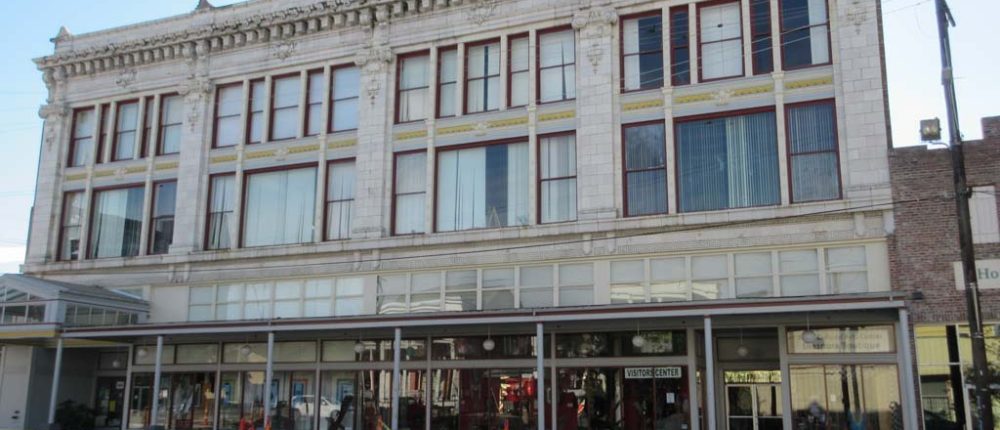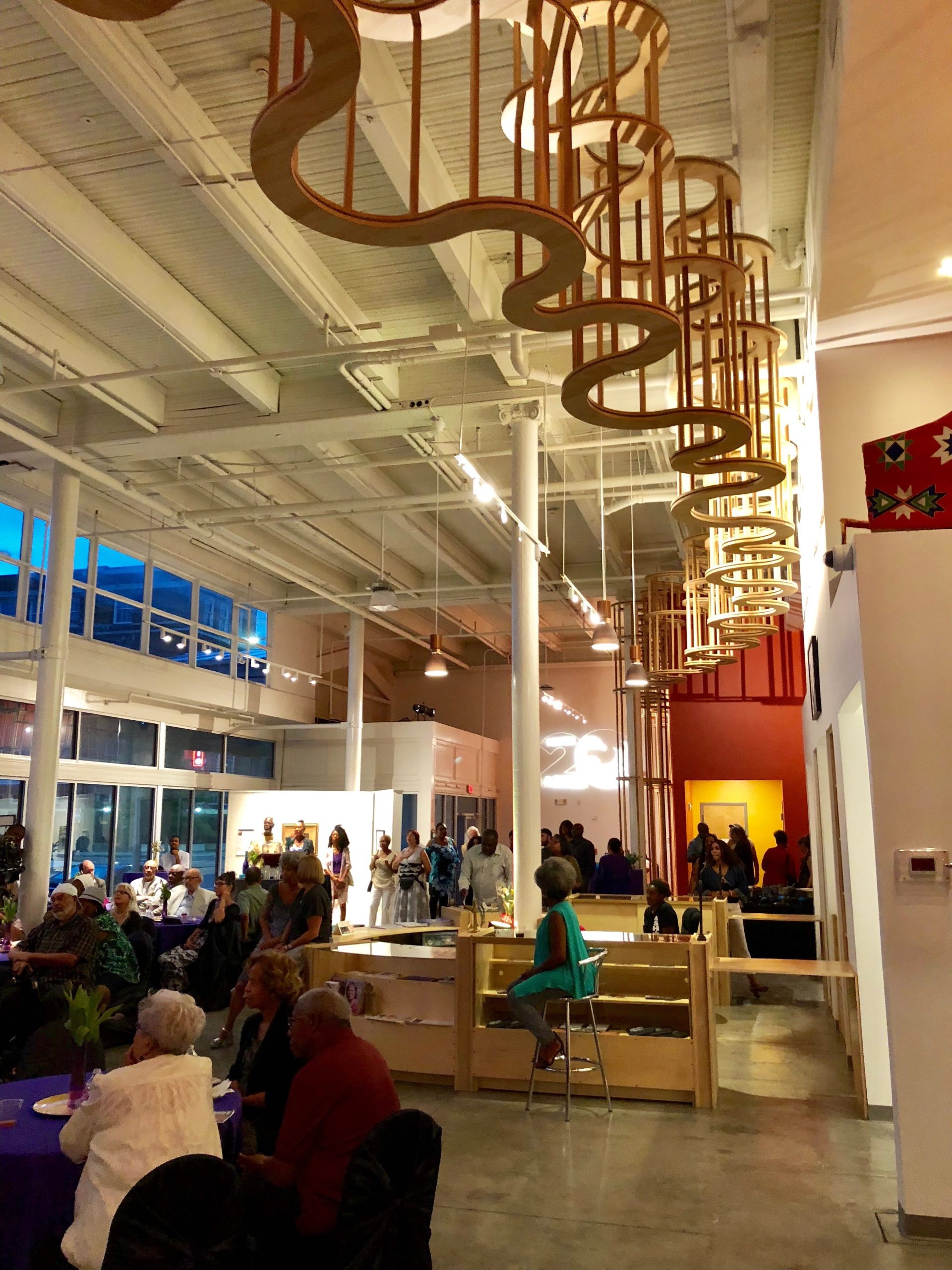
Trash to Treasure: A New Orleans Culture Re-Creation Story
The human mind is an intriguing thing. We can recognize potential upset and danger and yet still believe that it won’t really happen to us. So many of us walked that tight line in the run-up to the day that New Orleans Mayor Ray Nagin advised us to evacuate the city, if we were able. My immediate concern was for my two brothers and their families. My youngest brother was in North Louisiana with his in-laws. The older brother, a career policeman, had remained to assist in evacuation and rescue efforts as well as the protection and maintenance of the city in the storm’s aftermath. A great service he offered was visiting addresses to report on their status (flooding, storm damage, etc.). Unfortunately, his home also flooded.
Douglas Redd, the co-founder of the Ashé Cultural Arts Center (Ashé CAC), and I evacuated to Oppelousas, Louisiana, to stay with a mutual friend. We stepped into her house and found a home base for what would become a “meantime” existence. She generously made a family of us and ensured that we each had private space as well as a makeshift office, which we established in her kitchen. In one day we were secure, moving to the process of checking on our expanded network of family, friends, partners, and fellow artists and culture-bearers.
We connected with Fred Johnson and Todd Bridges of Black Men of Labor, a local social aid and pleasure club. Fred was navigating the flooded city in a boat, rescuing and checking on people. He had secured his own family in another city and was committed to be a resource to the sheriff’s office and any other public entity that was rescuing, recovering, or protecting our community and city. We were receiving calls from funders, colleagues, and partners across the country—all of them expressing their concerns and desire to help. We started trying to direct the things that people needed to them. In a short time, we realized that money was a better option and began asking for loaded Visa cards and cash to send to in lieu of things. We were identifying agencies that could provide support and anything we could to help. Both Doug and I were on the cellphone for hours a day for the first two weeks. The calls eventually slowed down, and our attention turned to preparing for reentry into the city. Ford Foundation program officer Linetta Gilbert approved a large grant for us to return to the city, and Ashé CAC and become a part of the recovery effort.

Returning to the city after six weeks was an eerie experience. Neither of us could safely return to our homes. Energy wasn’t available, and there was a cough-inducing stench everywhere. We hunkered down at Ashé CAC, sharing an apartment with Kysha Brown Robinson, who had turned her office for the Central City Renaissance Alliance into a live-in workspace. I stayed with Kysha at night, and Doug stayed in Ashé CAC to work with noisy tools. The real work was figuring out how much of a contribution we could be to the recovery. We became a destination for the receipt and distribution of goods (mattresses, kitchen setups, linens and towels, Visa cards, etc.). This early response to the needs of the New Orleans community joined with the gradual return of community cultural traditions. The Mardi Gras Indian Hall of Fame began assisting Mardi Gras Indians in receiving grants and identifying residencies across the nation. The Secondline Coalition began their return with specialty secondlines like the secondline that honored Big Chief Tootie Montana. Funders began calling to consult on who was up and running and what they needed.
This soon became an uncomfortable role for us, so we joined forces with Steven Bingler of Concordia Architects (co-founder of Common Edge) and Dr. Sheila Webb of the Center for Empowered Decision-Making to create the Making It Happen Festival, a name taken from the meaning of the Yoruba word ashé. The festival invited funders to be present to talk directly with community programs to determine if there was a potential for funding. Nearly 200 people attended, and about a dozen funders were present.

We also recognized the distress that our community was in, so we began producing monthly “chill zones,” Friday evenings when people could relax, catch their breath, and connect with others, as well as enjoy massages, acupuncture, and a comforting environment and food. We opened the doors of Ashé CAC for any activity that would serve the community, from planning meetings to social, cultural, and spiritual gatherings.
We began to design project initiatives that assisted and supported artists and culture-bearers. The Side by Side project emerged from that. We supported the return of several artists to jobs at Ashé CAC. At every opportunity we could, we brought folks together to feel the reality of returning to our new normal. We accepted the assistance of high-profile well-wishers and potential partners. Eve Ensler, now known as V, committed to a support group of women artists and culture-bearers who met monthly for more than a year to create a moving theatrical piece, Swimming Upstream, for which V and I served as executive producers. As an added effort, V’s organization V-Day celebrated its 10th anniversary in New Orleans in a “V to the 10th Extravaganza” that brought over 2,000 women back to New Orleans to reclaim the Superdome, which had served as shelter during and after Katrina for tens of thousands of people. The event offered a marketplace, the premiere of Swimming Upstream, and a collection of healing workshops, therapies, and experiences.
The final night featured a star-studded cast of V’s The Vagina Monologues. Nearly 40,000 people came from around the world to the Superdome to be with us. In addition, V-Day awarded over $700,000 to women doing work in New Orleans. As I remember this period in my life, I’m reminded of the letter I wrote to New Orleans, prompted by NPR.
MY DEAR NEW ORLEANS
My Dear New Orleans,
All my life, you have been my touchstone, the
place where I fit in and belong.
I know the cadence of your heartbeat and the
rhythm of your streets,
My Dear New Orleans.
You have shown me life so sweet, it brings joy to
my heart and life so hard it makes me cry.
I have learned balance and how to keep it in the
New Orleans equation that offers such a
wonderful blend of culture, art, lifestyle, spirit
and just plain living.
These values prevail and continue to thrive,
despite the drag and resistance of absent social
justice, missing fairness and equal access that
are so required to meet the quality-of-life
promise that is yours to give.
Dear New Orleans, you have shown the world the
need to enjoy the fullest range of human
experiences from birth to death.
You help populate the human landscape with
notice and ritual that reminds us of the true
value of living.
My Dear New Orleans, you are rising from a beat
down disaster that would have destroyed most,
and are singing away your blues, dancing up a storm of revival while you take leap after leap of
faith that, around a near corner, across an
overpass, or up a familiar street, a new New Orleans waits for us all.
And, we are becoming stronger, wiser, better
and more hopeful as we see progress marching
down streets like a Sunday Secondline.
Wave after wave of folks are joining, as the rhythm passes by and the brass band’s echo is calling the still-away home.
My Dear New Orleans, we are intending
ourselves into a new tomorrow where everyone has a good place to live, a decent job, lifelong
education and great healthcare that assures
wellness and safety that transforms our fear into vital energy.
New Orleans, we are finding a new willingness
and new ways to work outside our comfort zone, with each other, to create a new zone of wellbeing for everyone.
My Dear New Orleans, I was born here, I live my
life here and this is where I will someday die. Add me to the looooong list of New Orleans believers, well-wishers and mojo makers, who were are wanting, working, praying and willing you into a new era of New Orleans brilliance!
Blessings and Best Wishes
From Your Forever Daughter
Carol
I still love this city deeply. I see her potential as a model of community where culture, creativity, spirituality, and healing abound. We hold on to these rooted features of life, knowing that they help to bring us close to have a community where people are beloved, loving, and kind. Despite the challenges we face, we greet each other with “Hey Neighbor,” we call everyone “my baby,” and we’re still willing to help strangers in distress. This congeniality toward familiarity is like dandelions—they spread everywhere, nudging folks to step closer, to dance together, to make friends at parades, to step to you rather than against you. This is the community I love and a way of being that I keep in the front of my mind, so that I participate in carrying this legacy forward.
Featured image: Ashe Cultural Arts Center, New Orleans. Photo by Karen Kingsley, via Society of Architectural Historians.
